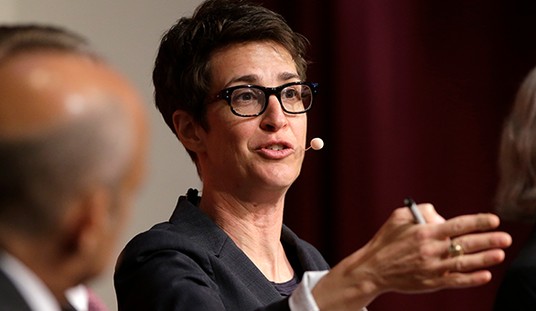Selling Your Writing in 13 Weeks, Week 8

Like a beautiful mirage in the desert of publishing, for decades ebooks were cool, interesting, but never quite there.
For a long time ebooks were sort of a mirage.
When I attended my first writers’ conference twenty years ago, the publishing world was abuzz with rumors of ebooks and how great they would be.
There were all sorts of panels which in retrospect seem rather silly about how ebooks would change the reading experience. You’d have these integrated “smart books” with lines you could click on to get more background.
Being a notoriously doubtful kind of person, I remember thinking “Uh… not unless people operate very differently from my household.”
There was no way I could lug my monitor to the bathroom or the kitchen.
Besides the whole idea of books with click through points seemed… odd. It might be okay, I thought, for non fiction – while reading a book on, say, glass blowing, I could see the clicking on some link for “older techniques” (still, unless those excursions were brief, it would become disruptive.) However, people were talking about “click through to find the character’s personal history” or “click through for a summary of how they got to this situation” or – more ridiculous – “click through for a map of the land” or schemata of the spaceship or…
I was greener than grass, but I was not so green that I did not know the experience of reading is following the writers’ voice and storytelling ability. As tempting as it is, in the second and subsequent books in a series to cue in the readers who haven’t read previous books without distracting the others, my guess is that the experience would be lacking.
I must have been right. For the next fifteen years, at conference, workshop, gathering of writers and editors, this wonderful idea of an ebook future was brought up. But, like rejuvenation or teleporting, it was a scientific development that was always in the future.
Does this mean nothing happened? Oh, no. Baen Books had a vibrant ebook store, and, as pagers gave way to personal organizers, people started reading on those and on other portable devices. (At the time my own dream device was the Irex Iliad. I was never able to afford it)
However most ebook reading devices were massively expensive, uncomfortable on the eyes, and not used unless you had some special incentive – like traveling a lot. Baen sold comfortably to a segment of the population who liked ebooks, but most other houses – after a few abortive attempts at an ebook department – more or less ignored the whole thing.
The outlet for indie books I became aware of was Smashwords, and the quality of most books posted there, from the bizarrely off-size covers to the writing, reinforced every stereotype of the self-published author.

The early days of publishing reinforced the image of self-publishing as a sort of back alley: rough, dangerous and not very nice.
To an extent it was right, too. There were rumors of people selling hundreds of copies on Smashwords, but that was about it. There was not a big enough market to warrant it, since relatively few people owned portable e-readers.
The first Kindle reader had a greenish screen and though some of us got very excited over it because we thought it would be a better way to carry books we were reading for friends, it was still not a very good reading medium.
And then Amazon opened its doors to indie publishing, and brought out the Kindle 2, also known as kindle keyboard. I got given one for Christmas and was very doubtful about it. Until I started reading on it. Other than the fact that – having a cover on it – I tended to forget what it was and lay it down with its face down, as I do other books (yes, I know. Horrible person) and then forget where I’d put it, it was almost exactly like reading a book.
At that time, putting up a book daunted someone like me. Six months later, I took a workshop on indie publishing (Run by the redoubtable Kristine Kathryn Rusch and Dean Wesley Smith) and learned to do my own books and put them up.
And now, two and a half years later, I’m learning a bunch of more sophisticated methods of doing everything from covers to interior formatting. However, one thing hasn’t changed – Amazon started all of this, and Amazon is still the greatest source of my indie income.
As a reader I know why this is. They have my account, and I can buy with one click and get it “beamed” (whispersync sounds a little silly) to my kindle. Whether I’m at the airport or waiting at the dentist, I don’t need to transfer files or do anything else. (I suppose the same is true of the Nook, but more on that later.)
From my point of view, without Amazon there would never have been indie. And Amazon is still the most successful and easiest outlet. In fact, I know many successful writers/publishers who haven’t bothered to learn how to get in anywhere else.
The Amazon platform is self-explanatory, both to sign up to publish, and to put a book up. When you sign up to publish, at least for now, I would have a “publisher’s name.” Ideally this entity should have legal existence, either through DBA or incorporation, depending on your state’s laws and whether you intend to publish other people or just yourself. (And please, if your name is Bob Smith, don’t call this Bob Smith’s books. Some people are still mired in the anti-self-publishing past) Consult with someone in your state as to the advisability of one type of legal entity over the other. Or just buy some books about it.
Still, Amazon is easy to sell your book through. Putting a book up, you get prompted for everything from title to description to price, to rights you can sell. I’m not going to tell you it’s not possible to do stuff wrong. My very first story that went up I managed to mark as public domain and price at $999. I corrected it almost immediately and, dang it, no one bought that first copy. However, if you’re even minimally attentive, and not so nervous you can’t read, you can get things up without much trouble.
Amazon accepts Mobi (its proprietary format) and epub. Both of these are easy enough to create. I am not paid to endorse anything, and I know people who use Sigil or Calibre to convert their book into the various formats. I confess that, being technologically Declined, I could never master either. Then I heard about this word processor named Atlantis. I understand – and you will too, if you look up reviews – that as a word processor it’s not really very good. (Though I find some things it does, like insert links better than Word.)
However, it opens documents in word and saves them both in epub and in mobi (this later requires that you download a module, which you can find by searching for mobi module for Atlantis.) The program is something under $40, or was when I downloaded it.
I’ll explain this process better in the next post, but right now my work involves bringing the book up in Atlantis, saving it in epub and mobi, transferring it to my reading devices and checking the conversion (more detail on this next week) then if everything looks fine, uploading it to Amazon, checking the conversion again, and getting it on sale.
Atlantis allows one to create a far more professional looking ebook than the early methods I tried, and trust me, if I can do it, you can.
I very rarely have any issues uploading books to Amazon, though they did once change their cover requirements as I was mid-loading a book and it almost drove me insane.
In terms of income too, Amazon gives me a good 90% of my monthly income, most months.
This is important to consider, because some Amazon programs like being able to take a book for free for five days, or being able to discount the book for ten days (a new thing) require you be exclusive with Amazon.
Some of the indie publishers tell you never do that, others tell you to always do that.
I’m of two minds. The idea of restricting myself to an outlet irks me, but at the same time I’ve run experiments such as keeping a free short story on the kindle at all times (for two months last year) and it bumped my income to four times what I was making at the time.
It’s a judgment call, and part of the judgment is what you are actually selling, because genre and subgenre can determine what sells in other outlets.
You have to understand there are very few formal studies of this, but almost every indie writer I’ve talked to has Amazon at 80 to 90% of income, and the other outlets bringing up the tail end.
Except – there’s always the exceptions – some people kept reporting Barnes and Noble, with the Nook reader, coming in at 50% of Amazon. These people always seemed to be writing mystery, and at the time I had no mystery to put up. Now that the rights on my historical mysteries have reverted, I can report that my Barnes and Noble income is rising, bringing it to about 10% of Amazon, with everything else making up another 10%. As the mix of mystery in my indie output climbs, it’s entirely possible this will rise too. I have no idea how it does for Romance because the only tangential romance I have up is actually a fictionalized biography of one of Henry VIII’s queens.
Barnes and Noble makes it almost as easy to upload a book as Amazon does. Almost? Well, there is a point at which I can never figure out if it has uploaded the right cover – but that might be due to my excessive ineptitude. There is also a bewildering assumption that you just might be writing your book on their platform, instead of uploading it. It’s very odd, but it is not difficult.
Unlike Amazon, your book goes live almost immediately.

Stacking the outlets in terms of income is relatively easy — but even the obscure ones might be worth extending your reach.
Creating your account with Barnes and Noble, on the other hand, is likely to make you scream and pull out your hair, as it’s not the most intuitive process around, including their decision that you can only have an account per tax-id. This is a problem when your corporate entity is a family business with more than one “publishing line” as is the case for a lot of working writers and their spouse/family.
Again with Barnes and Noble, I’ve had no issues putting books up or having them look like they were typed in by blind monkeys.
In fact, the only retailer/distributor that makes most indie writers pull out their hair is Smashwords. Part of this is what made them so successful initially.
Before Amazon, before Barnes and Noble, before the big book outlets got into the game, Smashwords allowed every Jack and Jill and their second cousins to put up a book, because they took books done in Word and put them through a converter engine. This engine is called The Meatgrinder, and there is a reason for that. What you put in might look nothing like what comes out.
Among other things that Smashwords gags on there are fonts of a certain size, more than two blank lines in a row (or at least it did.) It also often “discovers” code you didn’t know was there… and which in fact might not be there. This is particularly common when I’m uploading something I first wrote in WordPerfect years ago. I guess there are older codes that Smashwords decides are section breaks? Also recently it keeps seeing phantom page numbers on one of my table of contents.
Everyone who uploads to Smashwords ends up having their book rejected three or four times.
The interface is also more… primitive than Amazon and Barnes and Noble. Among its idiosyncrasies and a mark of how it started, is allowing you to give your book away for free or “for whatever the reader wishes to pay.” I have been called a crunchy-con in the past, but that’s too crunchy for me.
One of the things you can do with Smashwords is have Smashwords distribute your book to other outlets. I strongly urge you to opt out of distribution to Amazon and Barnes and Noble and go that way yourself. The other ones are open for consideration.
One problem with Smashwords is that its payment schedules/reports can be as infuriating as the meatgrinder conversion engine. I have not found any evidence of skullduggery, but there is plenty of inscrutable strangeness.

Reseller services like Smashwords and Draft2Digital have to coordinate the operational procedures of many sellers — so like bazaars they can be a little wild and hard to figure out.
Part of this is baked in due to how the books are distributed, but that doesn’t mean it won’t drive you insane, particularly as you start counting on that income. On this basis alone, a lot of indies are fleeing Smashwords. I’m using it only for those ebook platforms (mostly outdated) that I can’t reach in any other way.
A relatively new Smashwords competitor, Draft2Digital allows you to reach some of the platforms you might not have access to (again, I’m recommending you do Amazon and Barnes and Noble directly): Kobo, which is notoriously difficult with indie approval, and Apple, where you can’t get unless you have an Apple computer of a certain power. I don’t own Apple equipment (yes, I know – and I’m friends with Stephen Green. Go figure.) So I am trying out Draft2Digital for those two platforms. So far I’ve had Death of A Musketeer blocked by Apple for inappropriate content, which considering there is no explicit sex and nothing even vaguely off color left me rather confused. (Particularly since The Musketeer’s Seamstress published to ibooks with no problems. I haven’t tried The Musketeer’s Apprentice yet.)
As for whether Draft2Digital is better at reporting sales/payments, I don’t know yet. Will report as I find out.
Draft2Digital won’t get me to other stores like Diesel and Sony and such, though by the time you get to those outlets, you’re capturing marginal sales. I still like to be available to potential fans, so I still sell there through Smashwords. If this sounds like a patchwork solution – it is.
Other outlets — Kobo is both writer friendly and insanely difficult to get into. I’m not sure how they manage this. Their platform is as friendly as Amazon and Barnes and Noble, but your book can go into limbo as with Smashwords, only Kobo won’t tell you you’ve been rejected or why. I got so frustrated I gave up on going there directly, and therefore can’t tell you how it stacks in sales. This is a pity since I wanted to like the outlet. (It’s possible this was related to the Great Porn Scare where Kobo got complaints about objectionable content and thought that all indie publishers published porn. I don’t know. I gave up.)
Apple… well. I haven’t tried it. I don’t have the equipment to go direct. I understand it’s finicky to put books up, but the sales will stack up with Barnes and Noble and for some genres and subgenres halfway to those on Amazon. Apparently ibooks is much, much better overseas.
Then there are specialty outlets. The only one I have heard of is All Romance. Heard of, because I have yet to try it – see where I don’t have anything finished that is outright romance — so all I know is second hand. However, friends who write romance assure me sometimes they make more money out of All Romance than out of Amazon. If that’s your field, you should definitely give it a spin.
Now all these outlets have strict requirements as to size, cover size, type of links you can have and others, and there are also some tips on formatting your ebook so you don’t look like you just took it from some fan list. And there is metadata, and other ways to ensure you get discovered. I will go into that next week, as well as into the need for/advisability of IBSNs. Paper books is a matter for a later week, since I am only now doing that.
And I still owe you an instructional supplemental on proposals which I (really) assure you I haven’t forgotten and hope to put up this week.
*****
Photos courtesy Shutterstock 1-Copyright: Geraldas Galinauskas 2-Copyright: alexskopje 3-Copyright: baranq 4-Copyright: koya979 5 -Copyright: Fotokon










Join the conversation as a VIP Member